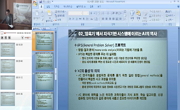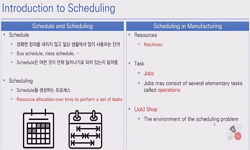Trials require that judges render judgments under uncertainty because they are asked to reconstruct historical facts using often ambiguous evidence. A study on judgment and decision making conducted by Kahneman et al. in the early 1970s found that hum...
http://chineseinput.net/에서 pinyin(병음)방식으로 중국어를 변환할 수 있습니다.
변환된 중국어를 복사하여 사용하시면 됩니다.
- 中文 을 입력하시려면 zhongwen을 입력하시고 space를누르시면됩니다.
- 北京 을 입력하시려면 beijing을 입력하시고 space를 누르시면 됩니다.
법적판단에 있어 인지적 오류와 극복방안 = Cognitive Errors in Judicial Decision Making and Measures for Debiasing
한글로보기https://www.riss.kr/link?id=A108688486
- 저자
- 발행기관
- 학술지명
- 권호사항
-
발행연도
2020
-
작성언어
-
-
주제어
불확실한 상황에서의 판단 ; 휴리스틱 ; 편향 ; 스키마 ; 프레이밍 ; 확률판단 ; 공변량 ; 기저율 무시 ; 대표성 휴리스틱 ; 가용성 휴리스틱 ; 앵커링 ; 후견편향 ; 확증편향 ; 역추정 오류 ; 과신 ; 스토리 모델 ; 탈편향 ; judgment under uncertainty ; heuristic ; bias ; schema ; framing ; probability judgment ; covariance ; base rate neglect ; representative heuristic ; availability heuristic ; anchoring ; hindsight bias ; confirmation bias inverse fallacy ; overconfidence ; story model ; debiasing
-
자료형태
학술저널
-
수록면
1-252(252쪽)
- 제공처
-
0
상세조회 -
0
다운로드
부가정보
다국어 초록 (Multilingual Abstract)
Trials require that judges render judgments under uncertainty because they are asked to reconstruct historical facts using often ambiguous evidence. A study on judgment and decision making conducted by Kahneman et al. in the early 1970s found that humans commit systematic errors depending on heuristics under such uncertainty. Judges, as experts in legal judgments, have embodied schema through legal training and experience, but empirical research has shown that they are vulnerable to cognitive errors due to heuristics and human biases. Therefore, it is critical for judges to adopt strategies to reduce cognitive bias. To this end, it is desirable for judges to have a bottom-up strategy that examines intuitive and deliberate judgments carefully and closely, as well as the evidence, rather than a hypothetical top-down strategy. Furthermore, multiple experiments suggest that, contrary to popular belief, actuarial judgments yield better results than holistic judgments.
Judges are affected by various heuristics and cognitive errors, such as framing, loss aversion, probability judgment, illusory correlation, base rate neglect, conjunction fallacy, representative heuristic, hindsight bias, anchoring, attribution error, inverse fallacy, availability heuristic, confirmation bias, overconfidence, story model, and egocentric bias, at each stage of case. These stages include: (1) understanding of the facts and recognition of the issues; (2) judgment of the relevance and validity of evidence; (3) judgment of the defendant’s responsibility; (4) information process and judgment; and (5) attempts to resolve a dispute with a settlement. Such judgment errors are normally confirmed by identifying differences between laws of logic and normative standards for probability theory, etc. In particular, in sensitivity to probability theory, specifically, misunderstanding the difference between base rate neglect and false intuition about randomness may directly lead to the false evaluation of evidence.
Also, because a trial has the underlying binary nature of plaintiff-defendant, acceptance- rejection, and guilt-innocence, trials are subject to representative heuristics that judge a category according to the similarity or representativeness of the object being judged. Numerical information, such as a claim amount or the demand of a sentence suggested during a trial, also serves as an anchoring for the judgments of judges. This is a result caused by biased access to information that matches the anchor and, therefore, judges try to adjust from the anchor to a reasonable target value, but this adjustment is always insufficient. An orderly, logical argument that can be easily understood in a trial appears plausible depending on the availability heuristic, which might be irrelevant to the validity of the evidence. Courts are particularly vulnerable to hindsight bias because they ordinarily determine responsibility for incidents after the fact. Since the hindsight bias reflects a human's intrinsic cognitive disposition, the bias can be minimized by an objective behavioral criteria as a reference point of judgment rather than intuitive judgment based on the past point of view. In a criminal judgment, the probability that the accused is guilty when there is evidence of guilt and the probability that such evidence exists on the premise that the accused is guilty are easily confused, which is the result of the influence of inverse fallacy. However, since there are so many examples where the probability values of P(H|D) and P(D|H) are extremely different, this not only yields a representational probabilistic error, but also has a great impact on the quality of actual judgment. The confirmation bias refers to the tendency to selectively seek only evidence corroborating the hypothesis rather than disproving it. The confirmation bias therefore makes judges treat contradictory evidence as an exception rather than as a question of the accuracy of the hypothesis and exclude contradictory evidence from the explanation or evaluate discriminatorily by applying rigorous examination to evidence that contradicts the hypothesis.
Debiasing from such cognitive error is crucial to restoring confidence in trials. However, many empirical studies show that the recognition or warning of the possibility of cognitive bias or the cognitive effort to avoid bias does not reduce errors. It is important not to overlook the importance of debiasing because the motivation for accurate judgment or the recognition of Heuristics and Biases enable judges to know when heuristics shouldn't be used, and education and training about debiasing makes it possible to use debiasing strategies. Among debiasing methods, important strategies that are known to be effective include the use of “think the opposite” and linear models, and the adoption of outside views. In particular, think the opposite can extend a hypothesis sample to opposite alternatives that are “unrelated” to the original hypothesis, which helps to form a more representative hypothesis. Since trials are designed to reduce bias, the adversary system, cross-examination, the principle of written indictment only, the exclusion of character evidence, the principle of ex post facto prohibition, and the recognition of limited admissibility of forensic evidence may suggest that such debiasing strategies have been institutionally accepted.
It is a mandatory duty for judges to know the content of cognitive errors and make an effort to think objectively and reason deliberately to reach an accurate judgment. However, since simply knowing the content and cause of cognitive errors has limits in preventing biases, judges must adopt the correct cognitive strategies and judgment tools―an important goal for the study of legal judgment and decision making.




 KISS
KISS






